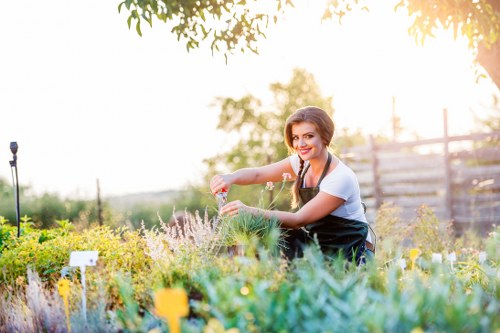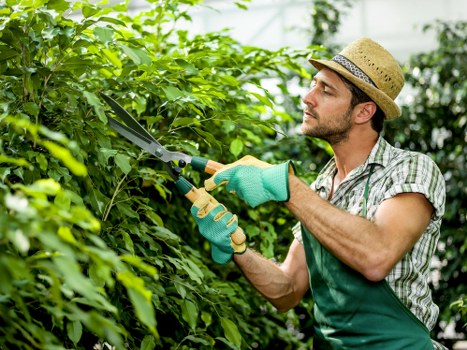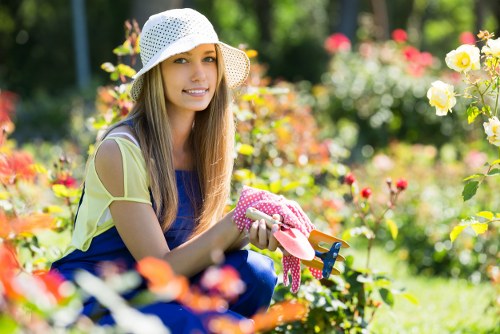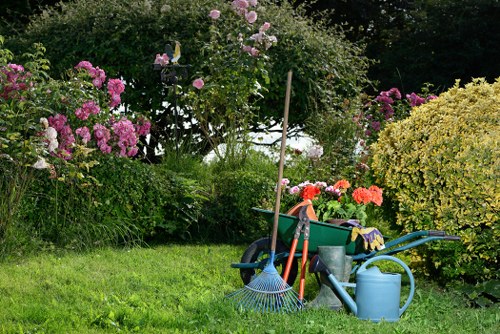Gardeners Slade Green: Nurturing Nature in Our Community
Introduction: Embracing Green Spaces

Gardeners Slade Green represents more than just a location; it embodies a vibrant spirit of community, nature conservation, and the art of horticulture. In Slade Green, residents and local gardeners have embraced the challenging yet fulfilling task of cultivating diverse green spaces that enhance the quality of life. The gardens cultivated here not only provide a visual feast of colors and scents, but also serve as peaceful sanctuaries for neighbors, families, and individuals alike. Sharing a commitment to sustainable practices, local gardeners strive to reduce their environmental footprint while preserving local traditions.
This article explores Gardeners Slade Green from multiple angles, including its history, community impact, and modern trends in gardening and landscaping. We will uncover the passion behind every seed planted and every shrub nurtured, and reflect on how these spaces contribute to both the town’s charm and ecological sustainability. From urban challenges to innovative green techniques, Slade Green is positioned as a local haven for natural beauty.
As we delve into the topic, we also recognize the importance of community collaboration and empathetic environmental stewardship. This article is written in a tone that balances seriousness with warmth, ensuring that every reader, whether a seasoned gardener or a curious newcomer, can appreciate the efforts taken to foster lush greens in an urban setting.
History and Community Impact in Slade Green

The history of gardening in Slade Green is interwoven with the evolution of the local community. Over the decades, community gardens have served as a meeting point for neighbors, a venue for exchanging ideas on organic farming, and an arena for preserving traditional gardening techniques. This journey from modest allotments to celebrated community gardens tells a story of resilience and continuous improvement in urban horticulture. Many long-standing families in Slade Green have passed down their gardening wisdom across generations.
Historical records highlight that Slade Green has always been appreciative of nature’s aesthetic and practical benefits. Early settlers observed the healing power of nature, and this inspired an enduring legacy of caring for the environment. Today, community groups and local gardening clubs celebrate this history, reinforcing the cultural ties that bind people to the land, all while adopting modern gardening innovations.
In the wake of urban development, local gardeners have become stewards of the environment, advocating for green infrastructure even in densely populated blocks. As city planners collaborate with green advocates, initiatives such as sustainable water management and eco-friendly landscaping have emerged. This imagery of gardeners actively shaping the urban landscape serves as an enduring reminder of the vital relationship between man and nature.
Modern Gardening Techniques and Sustainable Practices

Modern gardening in Slade Green is characterized by innovation and a return to natural principles. Many gardeners are now integrating eco-friendly practices that involve composting, water recycling, and organic pest control. Rather than relying solely on chemical fertilizers, locals tend to cultivate layered soil structures, incorporate natural predators, and use cover crops to enrich soil fertility. These practices not only foster healthy plant growth but also contribute to the wider ecosystem.
In addition to sustainability, there is an increasing trend towards personalized garden spaces where creativity meets practicality. Gardeners often use a mix of native plants and exotic species to create a tapestry that is both functional and aesthetically pleasing. Features such as raised beds, vertical gardens, and container planting have become popular solutions in limited urban spaces. The adoption of these techniques demonstrates the community’s commitment to environmental stewardship.
Local workshops and community events provide platforms where enthusiasts of all ages are encouraged to share their experiences. From interactive classes on organic gardening to practical demonstrations of simple permaculture principles, Slade Green is at the forefront of fostering a greener future. This sense of community is reinforced by social media groups and local clubs that exchange tips and celebrate the joys of nurturing nature in urban settings.
Local Community Initiatives and Green Projects

The heart of Slade Green’s gardening scene is reflected in its many community initiatives. Local organizations have developed projects that aim to transform unused urban spaces into blooming community gardens. These initiatives not only beautify the neighborhood but also provide spaces for residents to come together and share their love for nature. They organize seasonal events, tree planting drives, and habitat restoration projects that invite everyone to participate actively. Community-driven projects have become the lifeblood of local environmental conservation.
Particular attention is given to the educational aspect of these projects. Schools, community centers, and local clubs regularly host informative sessions where expert gardeners teach young enthusiasts the basics of planting, pruning, and ecosystem care. These programs emphasize not just the environmental importance of gardening but also the personal satisfaction derived from nurturing a living, breathing ecosystem. The impact of these educational initiatives stretches far beyond the garden, nurturing a generation that values sustainability and community collaboration.
Moreover, green projects in Slade Green are often designed with an innovative twist. For example, public spaces now incorporate smart technology that monitors weather patterns and water usage, ensuring that resources are used efficiently. Local gardeners, with guidance from technology experts, provide data that helps optimize environmental practices in real-time. This harmonious blend of tradition and technology reflects a forward-thinking approach to urban gardening that continues to inspire others.
Local Relevance: The Nearby Areas Surrounding Slade Green

Slade Green is not an isolated gem in a sprawling urban landscape. Its charm is enhanced by the network of nearby areas, each contributing its unique features and adding diversity to the gardening culture. For instance, Erith is known for its historical architecture and quaint parks, where traditional gardening meets modern design. Its proximity to Slade Green allows residents to enjoy complimentary communities with shared resources and cultural events.
Another notable nearby area is Belvedere, which offers lush public spaces and active community gardens. Belvedere’s vibrant local markets provide a source of organic produce that many gardeners in Slade Green incorporate into their green spaces. Additionally, Bexley contributes a mix of suburban charm and urban energy, with community projects that tie together residents from various backgrounds. Each of these areas plays a complementary role to the comprehensive gardening scene found in Slade Green.
Other neighboring localities include Bexleyheath, known for its retail and cultural scenes; Plumstead and Thamesmead, where residential areas are punctuated by green corners and well-kept public parks; and Abbey Wood, a small community offering a rich tapestry of history and modern living. Alongside these, areas like New Eltham, Sidcup, Crayford, Greenwich, Charlton, and Woolwich enhance the region’s green appeal. Visitors and residents alike benefit from this well-connected network, making Gardeners Slade Green a hub for ecological and cultural exchanges.
The Role of Technology in Modern Urban Gardening

Integrating technology into urban gardening has revolutionized the way communities like Slade Green approach nature. Today, gardeners utilize smartphone apps that provide real-time weather updates, soil analysis, and even plant health diagnostics. These tools help them apply water and organic fertilizers more effectively, reducing waste and promoting better crop yields. The marriage of technology with age-old gardening wisdom has produced a generation of gardeners who are both high-tech and deeply connected to their roots.
Innovative tech-based methods have also introduced eco-monitors and automated irrigation systems into community gardens. This blend of modern convenience with traditional care enables residents to maintain lush, thriving gardens with greater ease. Moreover, many community events and workshops now feature interactive sessions on using these technologies, ensuring that both younger and older generations can benefit from such advancements.
Local tech start-ups have even partnered with gardening clubs to develop remote monitoring systems that alert gardeners to changes in their local microclimates. This data-driven approach supports sustainable practices and further reinforces the community’s innovative spirit. Gardeners in Slade Green demonstrate that technology can indeed share the spotlight with nature, ensuring that every plant receives the care it deserves.
Community Success Stories and Garden Transformations

Many success stories in Slade Green stand as living testaments to the positive impact of community gardening. Local residents, once facing challenges with urban blight and limited green space, have transformed neglected plots into thriving ecosystems. These success stories often begin with a modest idea—a small container garden or community composting initiative—that blooms into full-scale projects with the help of dedicated volunteers.
One outstanding example is a once-abandoned lot that is now a community haven full of native plants, flowering shrubs, and fruit trees. Local gardeners organized weekend work parties and shared resources to turn a derelict space into a lush, productive area that now serves as a point of pride for the neighborhood. The transformation was not just physical but also deeply symbolic, underscoring the power of collective effort and empathy.
Other success stories include the revival of community orchards and butterfly gardens that attract visitors from surrounding areas. These examples inspire other urban communities to take similar initiatives, thereby broadening the ripple effect of sustainable gardening practices. Such narratives prove that with passion and collaboration, even small spaces can be transformed into areas of beauty and ecological importance.
Challenges and Future Prospects

No journey is without its challenges. Gardeners in Slade Green encounter obstacles such as limited space, unpredictable weather, and occasional funding issues for community projects. However, these challenges are met with resilience and innovation. Community groups continuously adapt by sharing resources, exchanging ideas, and sometimes even pooling funds to overcome local hurdles. Their commitment is a testimony to the belief that every patch of land holds the potential for beauty and growth.
Looking ahead, the future of Gardeners Slade Green appears bright. Plans for new green spaces, partnerships with local educational institutions, and further incorporation of technology in garden management promise even more vibrant public parks, gardens, and community orchards. The local government has also expressed enthusiasm for supporting green projects that promote sustainability while enhancing the community’s well-being.
Future prospects include developing specialized programs for children and seniors to engage in gardening activities. These programs aim to improve physical health, foster community ties, and teach sustainable practices. With such initiatives, the legacy of Gardeners Slade Green is poised to flourish, inspiring future generations to honor the natural environment and the shared responsibility of nurturing our urban spaces.
Celebrating the Cultural and Artistic Aspects of Gardening

Gardening is a celebration of life and art, and Slade Green is no exception. Many local gardeners not only focus on producing edible plants and vibrant flowers, but also on creating beautiful, artistic landscapes. From carefully arranged flower beds to intricate topiaries, the blend of creativity and horticulture is visible throughout neighbourhood gardens. Art-themed garden installations, mural-painted fences, and hand-crafted garden ornaments add a layer of cultural expression that resonates with visitors and local art lovers alike.
The role of art in gardening stretches beyond aesthetics; it is a form of expression that fosters a sense of belonging and community identity. Workshops on garden art, such as mosaic-making or sculpture carving, further reinforce the connection between artistic endeavours and the natural world. These events encourage local residents to explore their creativity, nurture talent, and work collaboratively towards beautifying their surroundings.
Furthermore, collaborations with local artists have led to installations that celebrate the history, diversity, and resilience of Slade Green. These cultural projects transform ordinary public spaces into exciting landscapes that reflect the rich heritage and creative spirit of the community. The result is a dynamic environment where nature and art harmoniously coexist.
Conclusion: The Future is Green

In summary, Gardeners Slade Green stands as a beacon of hope and creativity in modern urban landscapes. The community’s commitment to sustainability, innovation, and the beautification of public spaces is evident in every garden, park, and green initiative. Whether it is through embracing modern technology or reviving traditional gardening methods, residents have shown that dedicated collaboration can transform even the most challenging urban settings.
The future of Slade Green lies in its ability to continue evolving, learning, and sharing the experiences of planting life and growth. Town meetings, educational workshops, and collaborative projects all serve to unify diverse groups under a common goal: to make their home greener, healthier, and more resilient. The legacy of Gardeners Slade Green reflects both a celebration of nature and a commitment to a sustainable future.
This article has explored the many facets of gardening in Slade Green—from its historical roots and community impact to modern technological enhancements and artistic expressions. It reminds us that even amidst urban challenges, nature can flourish with community effort and genuine care. By learning from the past and innovating for the future, Slade Green remains a model of environmental stewardship for urban centers everywhere.